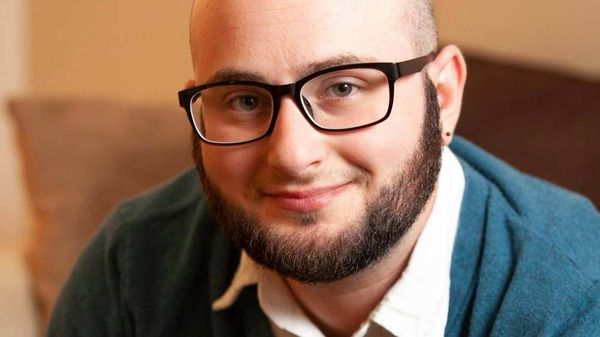September 10, 2007
Fenway gets federal grant to study LGBT populations
Frances Betlyon READ TIME: 6 MIN.
Under a presidential administration that has been accused of hampering scientific research in general and research on gay men in particular, the Fenway Community Health Center received a $1 million grant by the National Institutes of Health (NIH) to establish the first federally funded research center focused on conducting population research on the LGBT community. The goal of the center will be to collect population data and conduct demographic research on the LGBT community across the country with a focus on three research areas: HIV/AIDS, LGBT families and health disparities and the LGBT community. Judith Bradford, co-chair of the Fenway Institute, the Fenway's research arm, said that there is a lack of data on LGBT people in much of the body of existing population research, including the U.S. Census, either because researchers do not ask about sexual orientation and gender identity or because many people decline to disclose their LGBT identity. She said the Fenway's population research center, which will draw on the work of a faculty of 24 researchers working remotely from universities across the country, will work to correct that.
"You can understand the major reasons why we are underrepresented in these studies and why it is that government groups and all sorts of public health agencies don't know much about us. In fact it was only because we were counted in the last Census that people across the country realized that we were really out there," Bradford told attendees at a Sept. 4 breakfast at the Fenway announcing the grant. "A lot of people in this country still think that if we exist it's only a few of us, and all of those who are there are sort of deficient in one way or another. So the reality that 600,000 households of same-sex partners came out on the Census the last time sort of blew the minds of people all over the country, particularly legislators who now realize that they actually have same-sex households living in their counties."
Bradford said the Fenway very consciously tried to avoid attracting any publicity for or public discussion of the center until after the grant was finalized, wary that publicity could encourage opponents of LGBT rights in government to try to oppose the grant. She said people at the NIH warned the Fenway to keep a low profile until the grant was secure.
"[They said] political appointees look at all of this. You all remember the scare a few years ago when Congress challenged a number of grants, some of which we were very interested in. But ultimately we got through," said Bradford. She said throughout the review process Fenway won over the traditional population research scientists evaluating the grant proposal. Within the field of population research, Bradford said, there is great interest in studying the changing demographics of American families, and the Fenway population center's focus on LGBT families piqued the interest of many population researchers.
The Bush administration has been accused by critics of attempting to silence LGBT-focused research, specifically research focused on gay male sexuality. An April 2003 New York Times report quoted scientists working on AIDS and other STD research who claimed they were told by people at NIH that grants containing terms like "gay," "homosexual," "transgender," "men who sleep with men" and "anal sex" could be flagged and rejected. At the time a spokesperson for the health and human services department denied that grants were rejected because they dealt with politically controversial issues.
Bradford told Bay Windows that throughout the NIH review their grant was evaluated on scientific rather than political grounds.
"The process at NIH is one of scientific review, so when the scientific peer review process goes well and something is recommended for funding it would take some active interference to stop the process. We didn't get any active interference," said Bradford. She said there is a possibility that funding could be targeted in the future for political reasons, but she believes the project will survive any political scrutiny.
The goal of the population center is not just to collect population data on the LGBT community but also to use that data to create health interventions targeted at the LGBT community. Bradford said one of the barriers to designing public health interventions aimed at reducing HIV transmission in the gay male community, addressing the health needs of LGBT families, or learning about the health needs of populations like the bisexual and transgender communities is that there is little comprehensive data on what those populations look like.
"With other types of data that we're talking about where you want to understand, for instance, LGBT families, we don't have those data. We don't have surveys or government data sets that really capture the type of detailed or nuanced data that we need to develop interventions or to know how to provide care for people," said Bradford.
Another benefit of the center will be that its research will act to counter the attacks by the religious right on research that shows LGBT people and their families are as healthy and well-adjusted as their straight peers, Bradford told Bay Windows.
"There are a number of studies that have been done, for instance, around children of lesbian and gay families that demonstrate that the kids are fine, but these studies are challenged by the religious right and other groups because they can say the methods aren't sound, it's not population-based. By being able to do the population-based studies we'll be able to counter that, and it will get countered, because these studies will get published in peer reviewed journals," said Bradford. She said Fenway's population research center will not be involved actively in political advocacy, but its research will be a resource for organizations and individuals doing that political work.
The Fenway will become one of 17 federally funded research centers, several of which study other minority populations such as African Americans and Latinos. But compared to its peers the Fenway looks quite unorthodox. The Fenway is the only federally funded population research center not based out of a major university, and while it is working with Boston University's School of Public Health to implement the grant, most of the scientists conducting research for the center are located at universities spread out across the country, far away from the Fenway's headquarters on Haviland Street. Bradford said the faculty brings together many of the top researchers in LGBT health, and the center also has formal partnerships with a number of universities to conduct LGBT population research including University of California, San Francisco (UCSF), UC Berkley, University of Chicago, and Northeastern.
"We've got to show that it's a faculty. We've managed to convince [the NIH], they didn't believe this the first couple times we wrote this grant, we convinced them that these days you don't have to be in the same room with people to work with them, share with them, have relationships with them," said Bradford.
The center will also be working with the Ann Arbor, Mich.-based Inter-university Consortium for Political and Social Science Research (ICPSR) to create an online database of LGBT population research and data that will be available to the public.
The grant runs for five years, and during that time Fenway and its partners at BU and ICPSR will be working to develop the infrastructure of the population center and the faculty will begin applying for grants to do new research. Bradford said the hope is that NIH will provide additional funding at the end of five years to allow the population research center to continue. But even though the first grant is designed to allow Fenway to lay the groundwork for the population center, Bradford said much of the faculty is already engaged in LGBT-focused population research.
"There's original research that's actually going on now that faculty involved in the center are doing, and of course some of the work that we're doing here at Fenway. So it's not that we aren't going to be doing research all through this time. It's that we're going to develop grants in some new areas that we haven't historically done research in here at Fenway," said Bradford.







